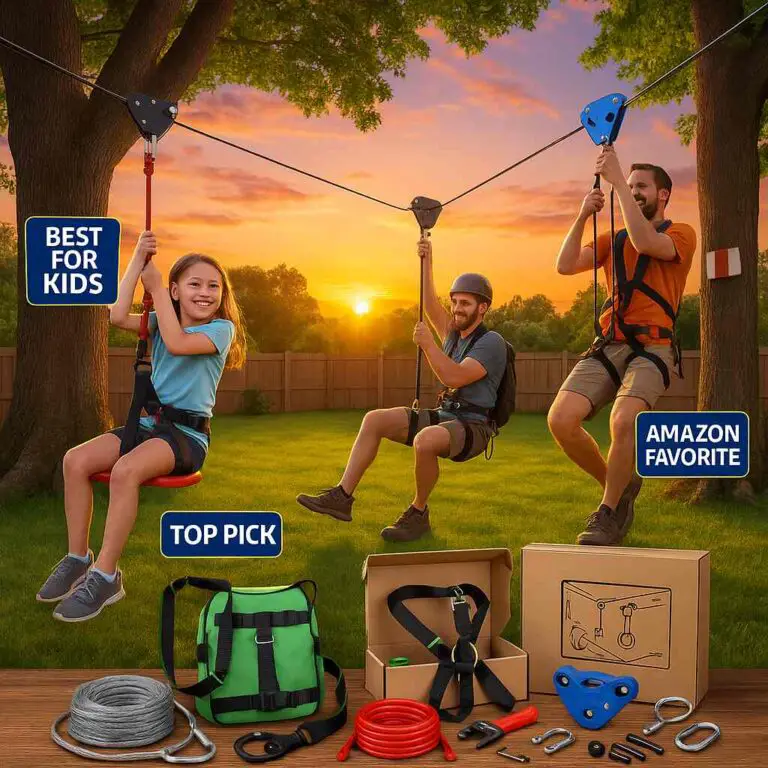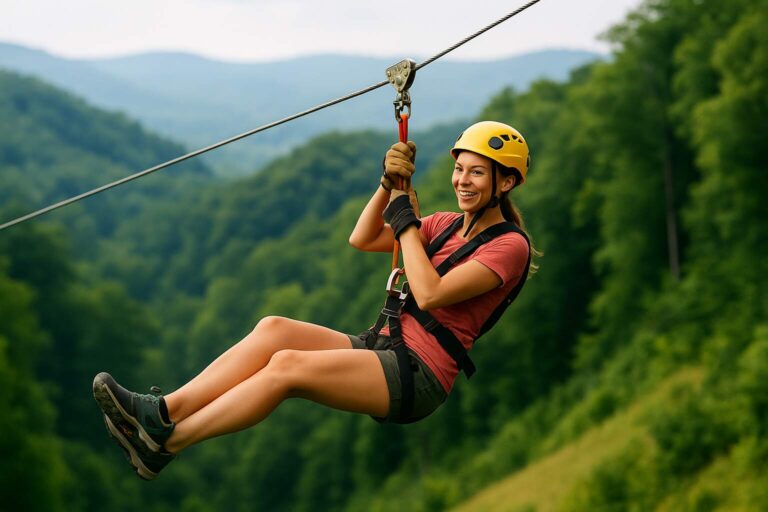Ziplining has grown in popularity as an adventurous outdoor activity, allowing people to soar through the treetops, experiencing the thrill of flying while surrounded by nature’s beauty. However, recent incidents have raised concerns about the safety of ziplining. Is ziplining dangerous?
Ziplining, when done with reputable operators and following safety protocols, is generally a safe activity. Statistics show that the risk of serious injury is low, but it’s not entirely without risk. The primary dangers stem from equipment failure, human error, or adverse weather conditions. To enjoy a safe ziplining experience, choose a trustworthy operator, follow all safety instructions, and be mindful of weather conditions.
In this article, we’ll explore the risks associated with ziplining, examine the regulatory landscape, and provide essential information for anyone considering this exhilarating adventure.
The Rise of Ziplining
Ziplining, once a mode of transportation in remote jungle areas, has evolved into a popular recreational activity worldwide. Its origins trace back to American biologist Donald Perry, who pioneered the first canopy zip line for research in Costa Rica’s rainforest in 1979. Since then, commercial zip line parks have sprung up across the globe, offering tourists and thrill-seekers a unique way to experience nature and adventure.
One of the key attractions of ziplining is the feeling of freedom and excitement it provides as you glide through the air. From Costa Rica’s Monster zip line, which boasts the longest zip line on earth, to zip lines that traverse over vineyards and wildlife reserves in the United States, the possibilities are endless. Even DIY kits allow people to set up zip lines in their own backyards, reflecting the widespread appeal of this activity.
The Safety Concerns
Despite its popularity, ziplining is not without risks. In recent years, there has been a significant increase in zipline-related injuries and even fatalities. A 2015 study published in the American Journal of Emergency Medicine reported that the number of zip line injuries in the United States rose from a few hundred per year in the late 1990s to more than 3,600 in 2012. While it’s challenging to determine an injury rate per capita due to the lack of participation data, zip-lining accidents can result in serious injuries, with nearly 12 percent leading to fractures or other hospitalization-requiring injuries, according to Ohio State University researchers.
Furthermore, there have been reports of fatalities associated with zip lines in the United States, which raises concerns about safety regulations. In 2015, a 12-year-old girl died in North Carolina when her tether snapped over a 40-foot canyon. The same year, an 18-year-old man in Tennessee suffered a fatal fall when his neck became entangled in the safety harness. These incidents highlight the need for comprehensive safety standards in the industry.
Ziplining Regulations in the United States
The regulation of zip lines in the United States is a complex and fragmented process. Approximately half of U.S. states, commercial zip lines are overseen by state agencies responsible for roller coasters or elevators. In other states, various departments, such as the Labor Department or the Department of Agriculture, oversee zip line operations. In some regions lacking state oversight, city or county regulations come into play.
However, regulatory authorities do not typically conduct in-person inspections of individual zip lines. Instead, they often review engineering plans and operation manuals for permit approval and require operators to undergo annual third-party engineering inspections. This variability in regulation across states and the lack of consistent oversight pose challenges for ensuring the safety of zip line operations.
To address this issue, the Association for Challenge Course Technology (ACCT), one of the industry organizations, has developed uniform safety standards for zip lines. In 2016, the American National Standards Institute accredited the ACCT’s zip-line-specific standard, which covers aspects like braking systems and staff training. Some states have already incorporated these standards into their laws, emphasizing the importance of adhering to these guidelines to ensure safety.
The International Perspective
Internationally, the regulation of zip lines is even less consistent and stringent, which can raise concerns for tourists participating in ziplining activities abroad. For example, Flight of the Gibbon, a renowned zip line operator in Thailand, has faced safety-related controversies despite its positive online reputation.
The history of Flight of the Gibbon involves a complex web of individuals and entities, making it difficult to ascertain responsibility in case of accidents. The company’s safety practices have come into question, with allegations of lax safety standards and improper communication among guides. In addition to the legal challenges faced by operators like Flight of the Gibbon, tourists often face difficulties in pursuing lawsuits or advocating for change when accidents occur in foreign countries, where bureaucracy and regulations may be less transparent.
The Consequences of Ziplining Accidents
Ziplining accidents can have life-altering consequences for those involved. In the case of Lisa Sayre’s accident in Thailand, she suffered severe injuries, including broken ribs, a tailbone fracture, a pelvis fracture, and a partially collapsed lung. Her ordeal continued as she faced challenges with her vision and mobility, making it a reminder of the potential consequences of zip line accidents. Lisa’s experience highlights the importance of thorough safety measures and effective regulation to prevent such incidents.
Conclusion
Ziplining can be an exhilarating and memorable adventure, providing participants with a unique perspective on nature and the thrill of flying. However, recent incidents have raised concerns about the safety of this activity, both domestically and internationally. To ensure your safety while ziplining, it’s essential to research operators, ask about their safety records and certifications, and be aware of the regulatory landscape in the area you plan to visit.
Ultimately, ziplining can be a safe and enjoyable experience when conducted with proper safety measures and adherence to industry standards. However, it’s crucial to exercise caution and choose reputable operators to minimize the inherent risks associated with this adventure. By staying informed and making informed decisions, you can make the most of your ziplining experience while prioritizing your safety.








